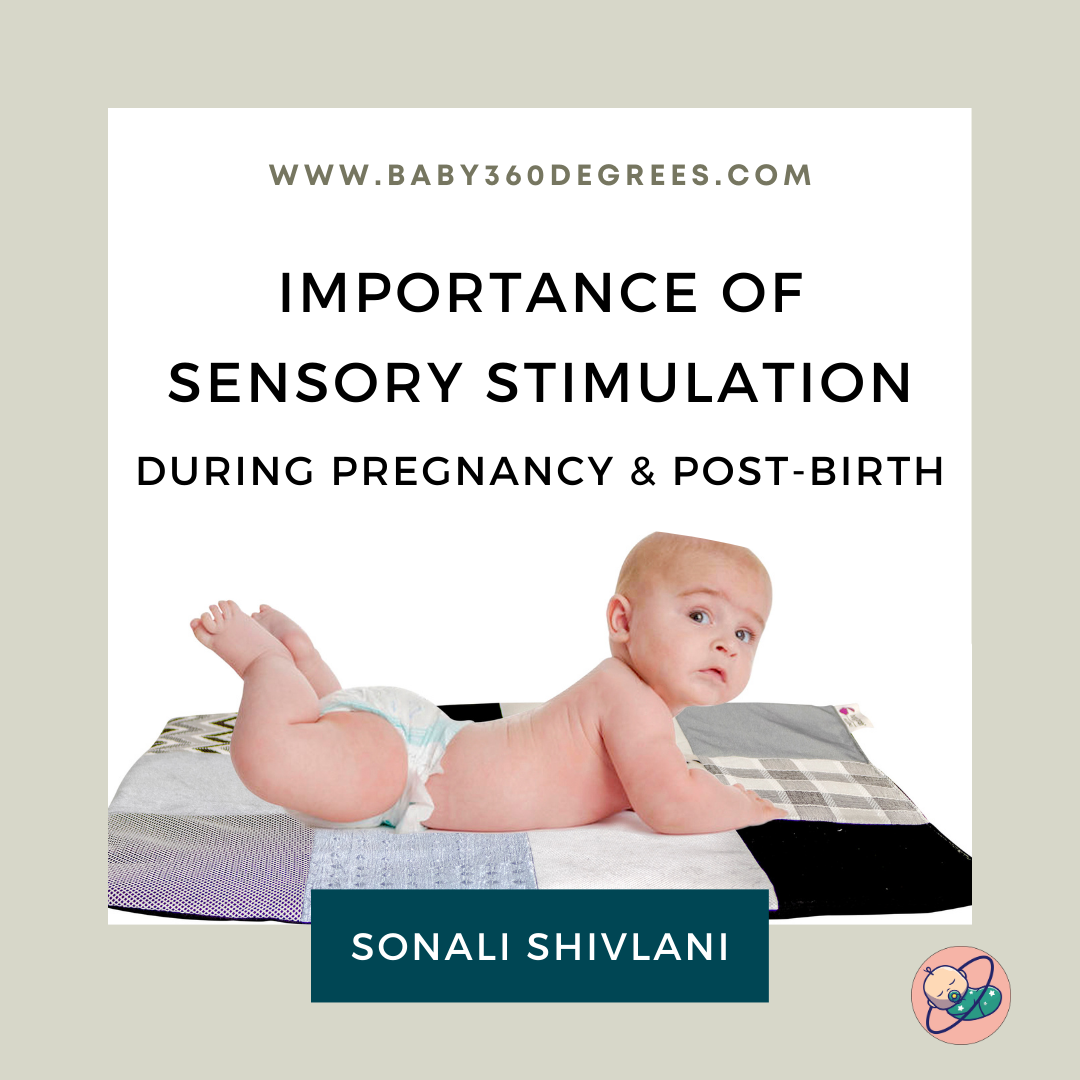From the moment of conception, a baby’s brain starts to develop at an incredible pace. This rapid growth continues throughout pregnancy and into the early years of life. One of the most crucial factors influencing this development is sensory stimulation—the experiences that engage a baby’s senses of touch, sight, sound, smell, and taste. Research has shown that sensory stimulation can enhance neural connections, aiding cognitive, emotional, and motor development.
For expecting and new parents, understanding the impact of sensory experiences both in the womb and after birth can help them create a nurturing environment that supports brain development. In this article, we explore how a baby’s brain develops, the role of sensory stimulation, the ways parents can actively participate, and research-backed evidence highlighting its importance.
Brain Development During Pregnancy
The brain begins forming early in pregnancy, with major developmental milestones occurring throughout each trimester. By the end of the first trimester, basic neural structures are in place. However, it is in the second and third trimesters that the brain undergoes rapid expansion and differentiation.
First Trimester (0-12 weeks): The neural tube forms, which later develops into the brain and spinal cord. Basic reflexes also begin to appear.
Second Trimester (13-26 weeks): The cerebral cortex, responsible for higher-order functions like thinking and reasoning, starts to develop. The fetus begins to respond to external stimuli, such as light and sound.
Third Trimester (27-40 weeks): The brain’s neural networks become more complex. The baby’s ability to recognize familiar voices and respond to sensory inputs strengthens.
A study published in the Journal of Neuroscience found that fetal brain activity increases when exposed to maternal speech, suggesting that prenatal auditory stimulation can promote early learning and memory formation (https://www.jneurosci.org/).
Sensory Stimulation in Utero
Although the womb may seem like a quiet and isolated environment, it is actually rich in sensory experiences. The fetus is exposed to a variety of stimuli that help shape early neural development. Here’s how sensory stimulation works during pregnancy:
1. Auditory Stimulation
By the 16th week, a fetus begins to detect sounds, primarily from the mother’s body, such as heartbeat and digestive noises. By 24 weeks, the baby can respond to external voices, music, and other sounds, though they are muffled by the amniotic fluid.
How Parents Can Help:
Talking or singing to the baby can familiarize them with voices, strengthening bonds after birth.
Playing soothing music can have calming effects, as research suggests that fetuses exposed to classical music exhibit lower heart rates and increased relaxation (https://nypost.com/).
2. Tactile Stimulation
Fetuses experience touch through their own movements, the amniotic sac, and the uterine wall. By gently pressing on the belly, parents can encourage movement and response.
How Parents Can Help:
Gently massaging the belly can provide comfort and familiarity to the baby.
Engaging in activities like water exercises can create gentle movements that stimulate the fetus.
3. Olfactory and Taste Stimulation
Molecules from the mother’s diet pass into the amniotic fluid, allowing the fetus to experience different tastes and smells. Research suggests that prenatal exposure to certain flavors influences postnatal food preferences (https://www.ncbi.nlm.nih.gov/).
How Parents Can Help:
Eating a variety of healthy foods can introduce different flavors to the baby.
Avoiding strong-smelling chemicals and pollutants can protect olfactory development.
Brain Development Post Birth
After birth, a baby’s brain continues to grow rapidly, forming new neural connections based on sensory experiences. In fact, 80% of a child’s brain develops by age three. During this critical period, interactions with caregivers shape cognitive, emotional, and motor skills.
Key Postnatal Brain Development Milestones:
0-3 months: Babies respond to sounds, recognize faces, and begin to track objects with their eyes.
4-6 months: Hand-eye coordination improves, and babies begin reaching for objects.
6-12 months: Language development starts, and babies begin understanding emotions and social cues.
The Role of Parents in Sensory Stimulation
Parents play a vital role in enhancing their baby’s sensory experiences. Here’s how they can actively participate:
1. Auditory Engagement
Talking, reading, and singing to a baby stimulates language development and strengthens parent-child bonding.
Tips:
Narrate daily activities to expose the baby to more words.
Play soft, soothing music during sleep time.
2. Tactile Stimulation
Touch plays a crucial role in emotional security and sensory awareness.
Tips:
Practice skin-to-skin contact to promote bonding and regulate the baby’s heartbeat.
Use different textures like soft fabrics, water play, and baby massages.
3. Visual Stimulation
Newborns see best in black and white, gradually developing color vision and depth perception.
Tips:
Use high-contrast black-and-white flashcards.
Introduce colorful objects and play with light-and-shadow patterns.
4. Olfactory Exposure
The sense of smell helps newborns recognize their caregivers.
Tips:
Allow exposure to natural scents like lavender for calming effects.
Avoid strong perfumes and synthetic fragrances.
5. Motor Stimulation
Encouraging movement helps with muscle development and coordination.
Tips:
Offer tummy time to strengthen neck and shoulder muscles.
Use a sensory mat for different textures and movements.
Research Supporting Sensory Stimulation
1. Prenatal Sound Exposure
A study in PLOS One found that babies exposed to lullabies in the womb recognized and responded positively to the same tunes after birth.
2. Postnatal Auditory Stimulation
A Nature study highlights that early auditory stimulation can enhance brain development and reduce stress in preterm infants (https://www.nature.com/).
3. Maternal Interaction and Brain Growth
Research from the National Institutes of Health shows that the quality of maternal interaction significantly impacts emotional and cognitive development (https://www.nih.gov/).
Conclusion Sensory stimulation, both in utero and after birth, is essential for a child’s brain development. Parents can play an active role in fostering a rich sensory environment that enhances cognitive, emotional, and physical growth. By engaging in simple activities like talking, singing, and introducing varied textures, parents can set the foundation for lifelong learning and well-being.








